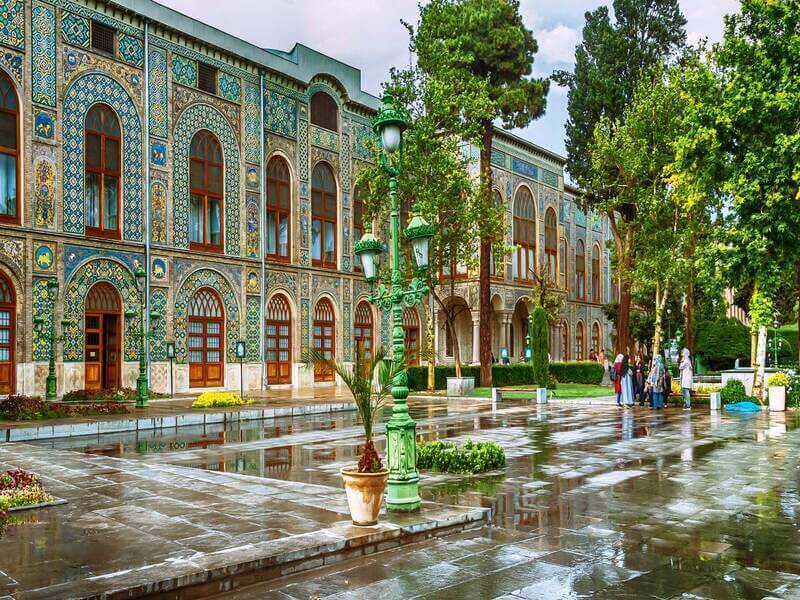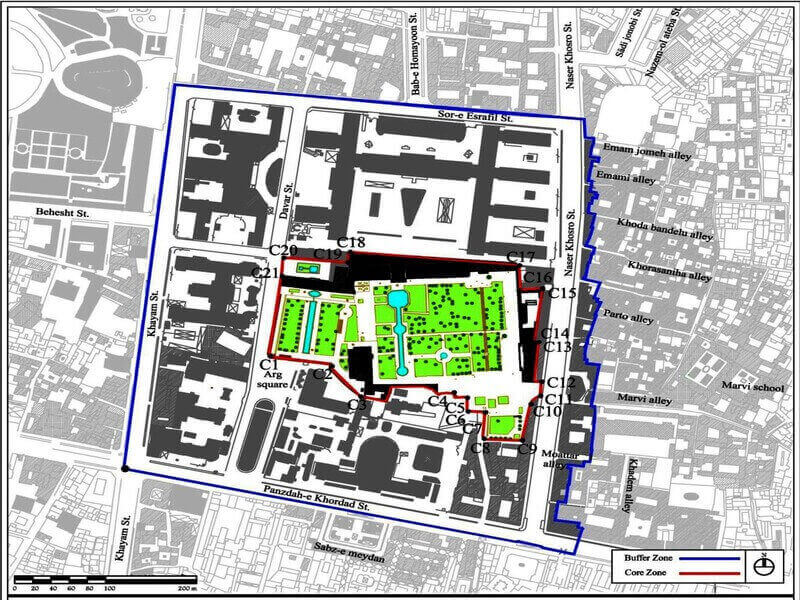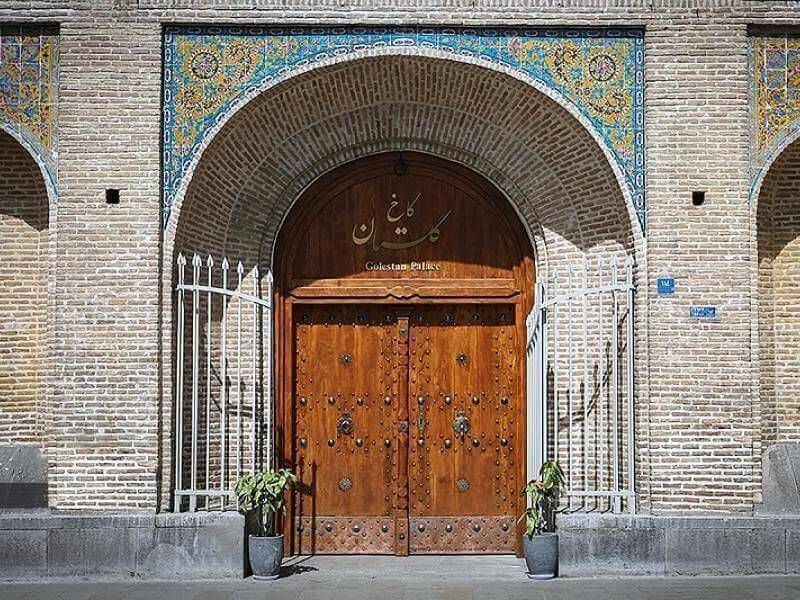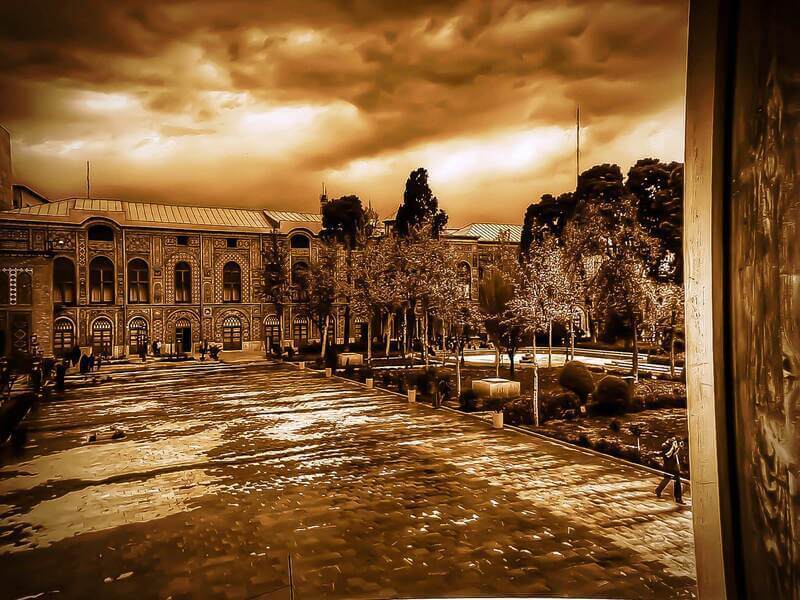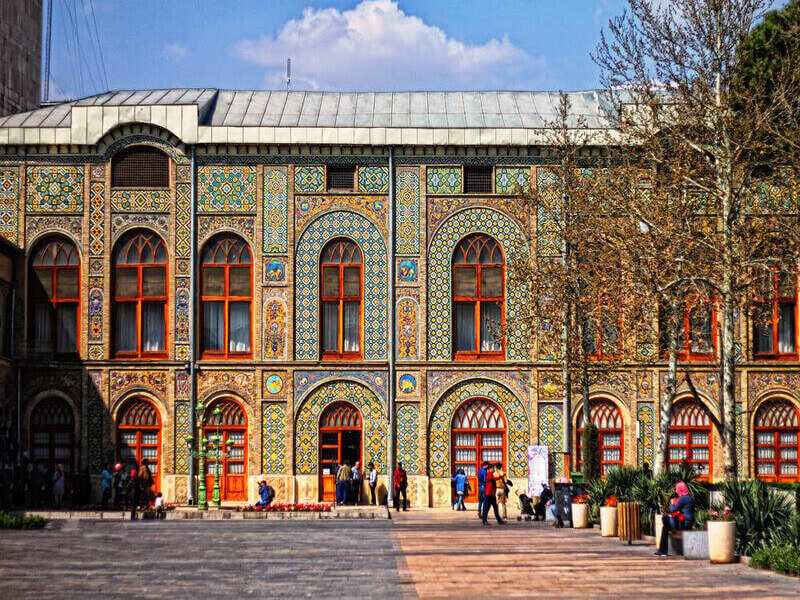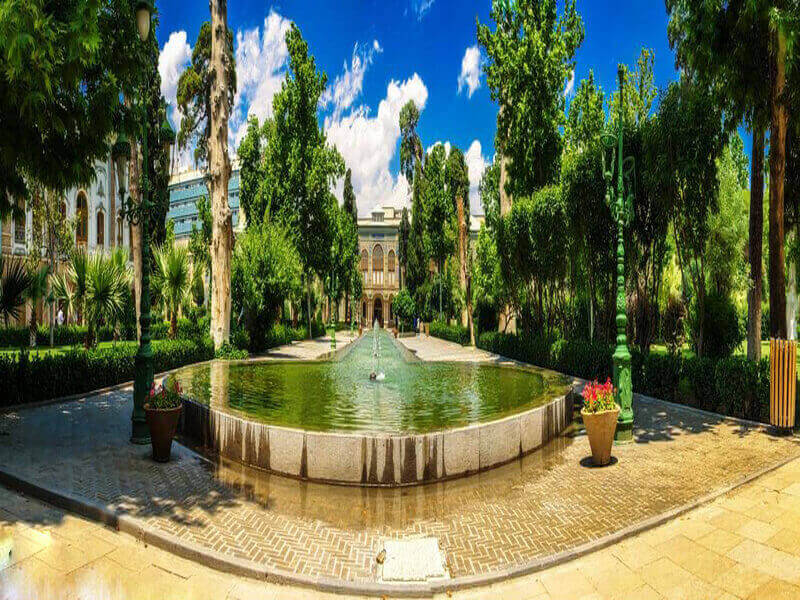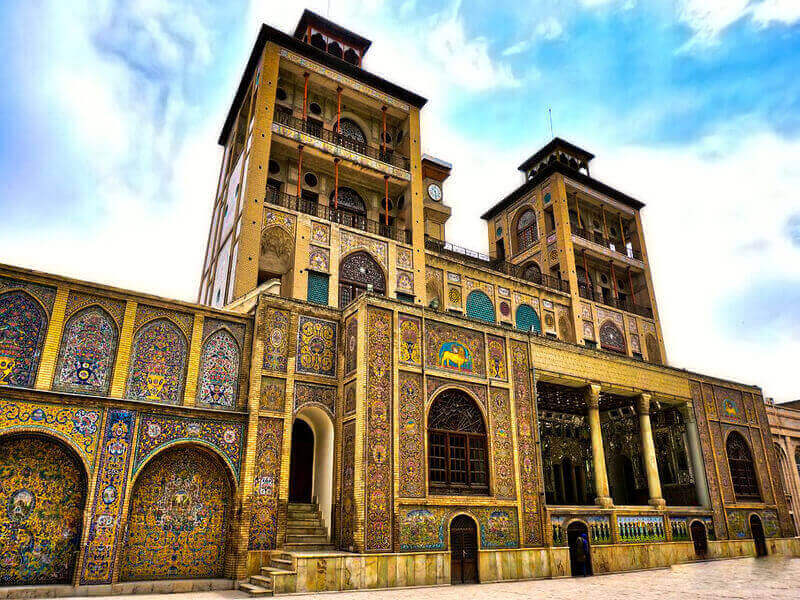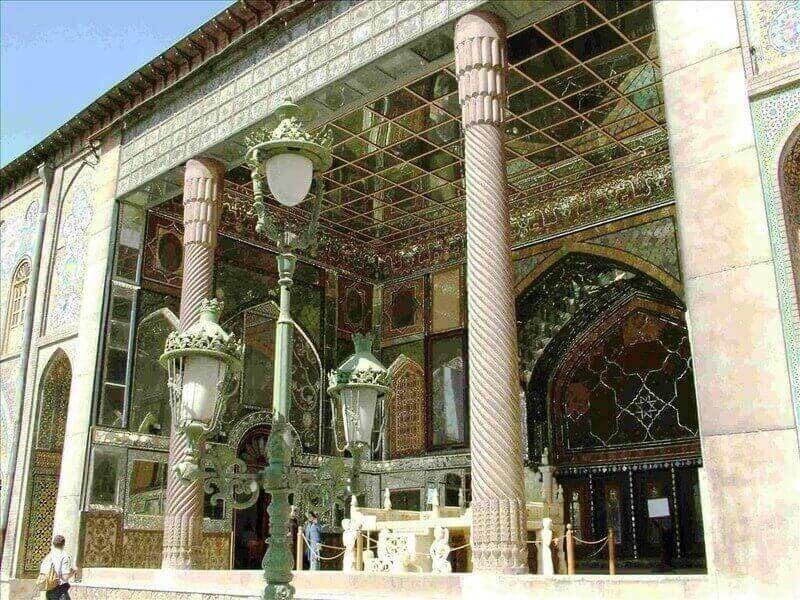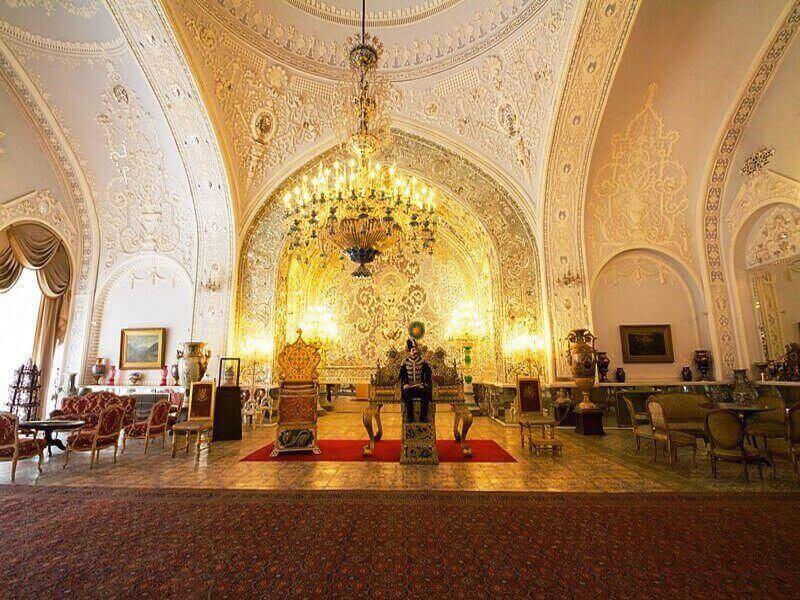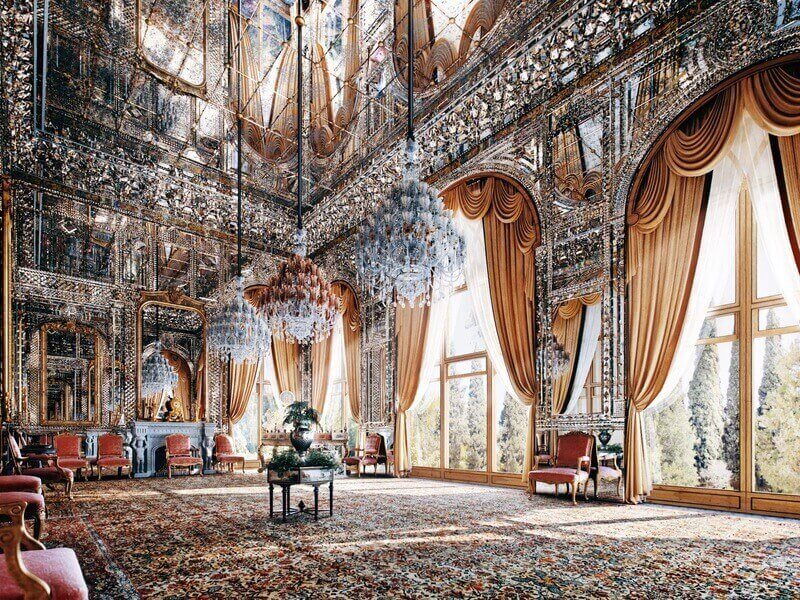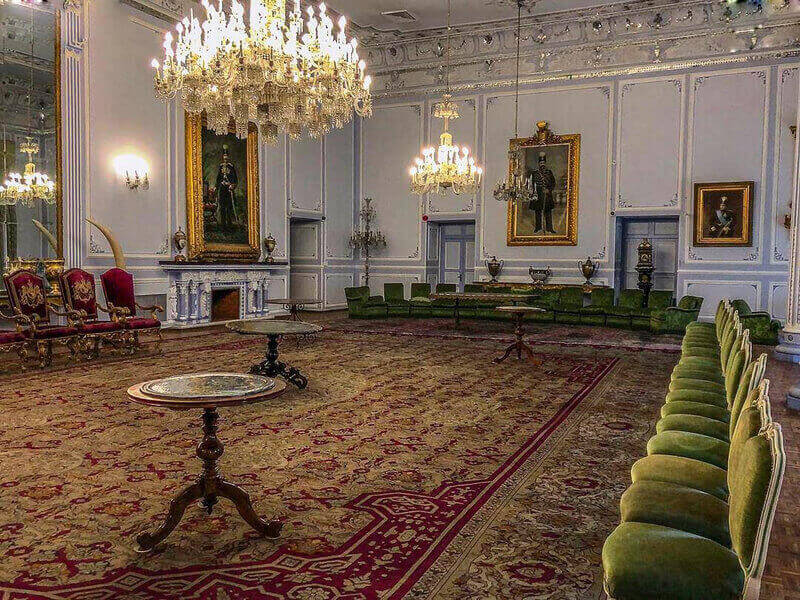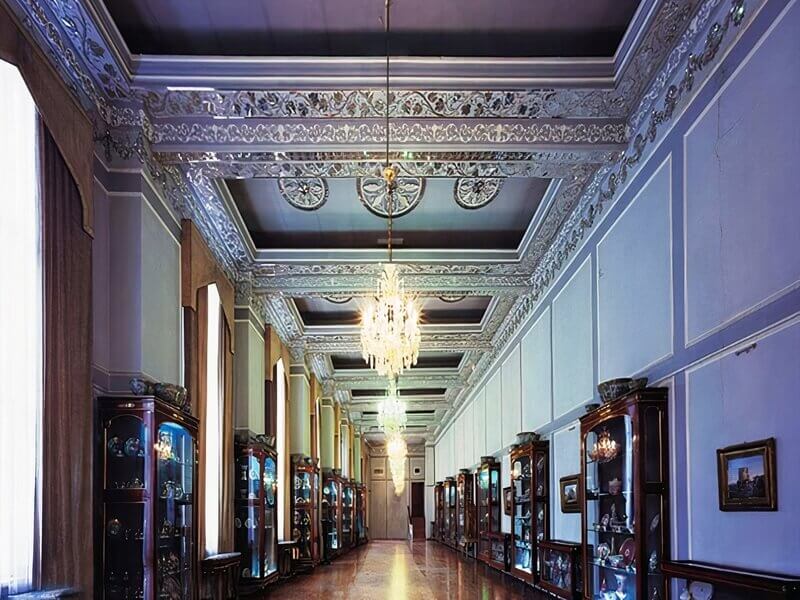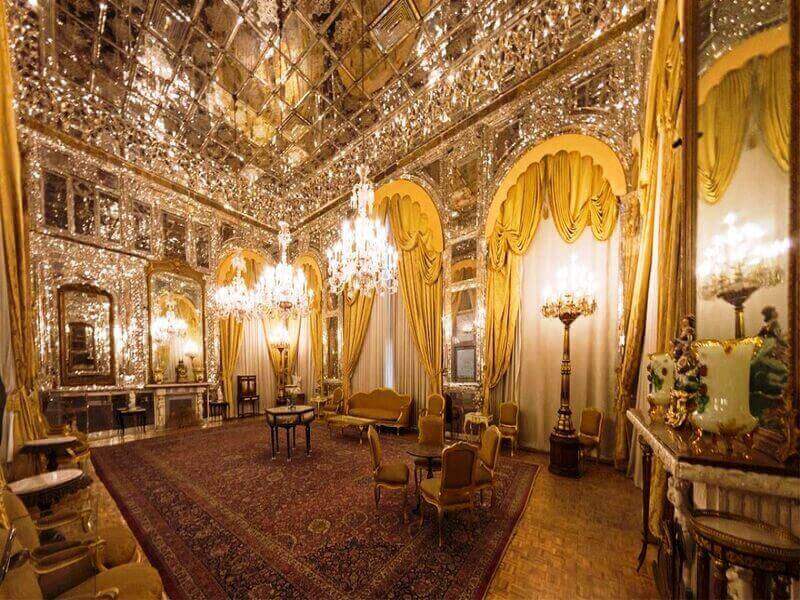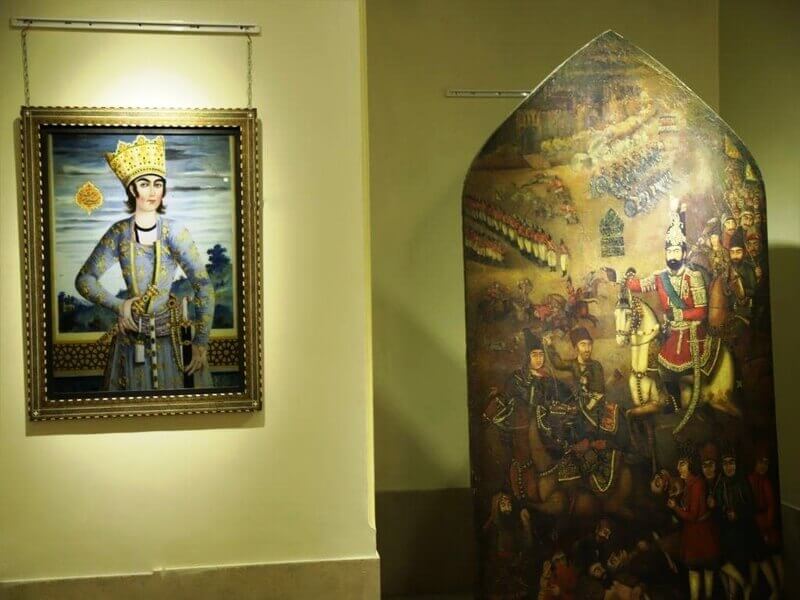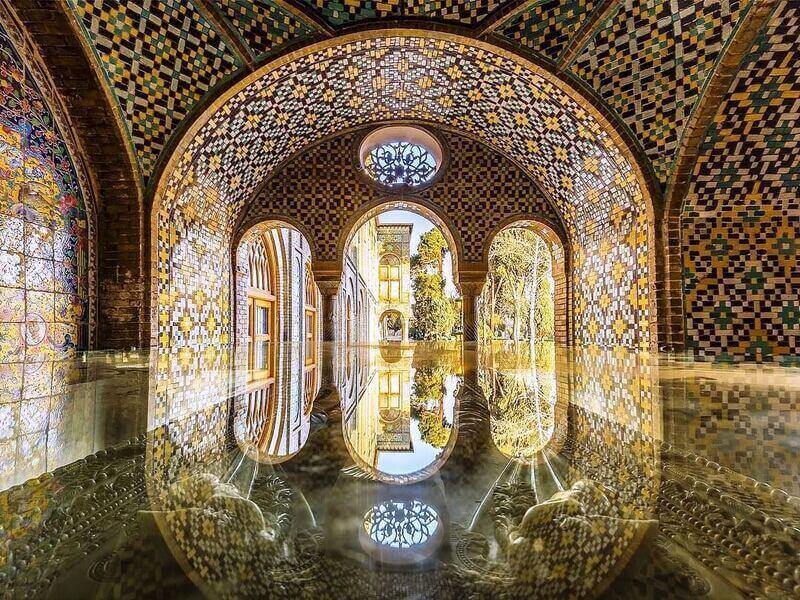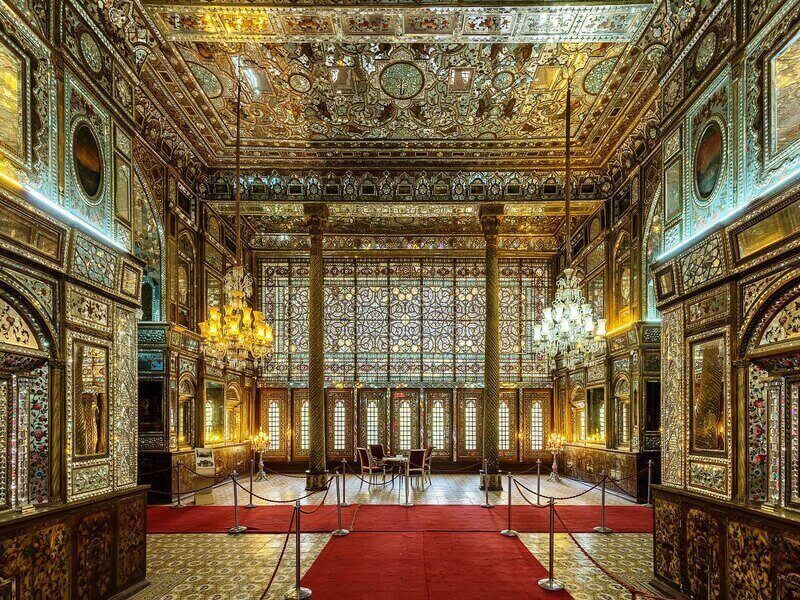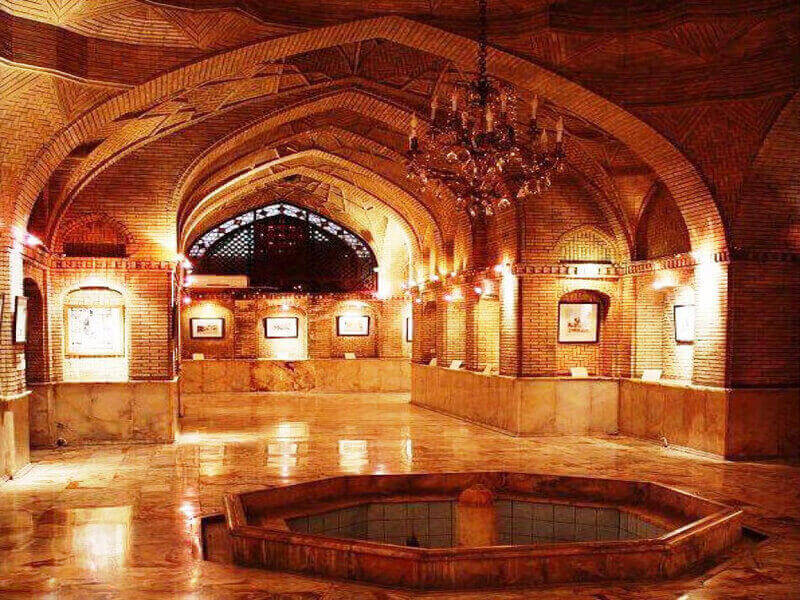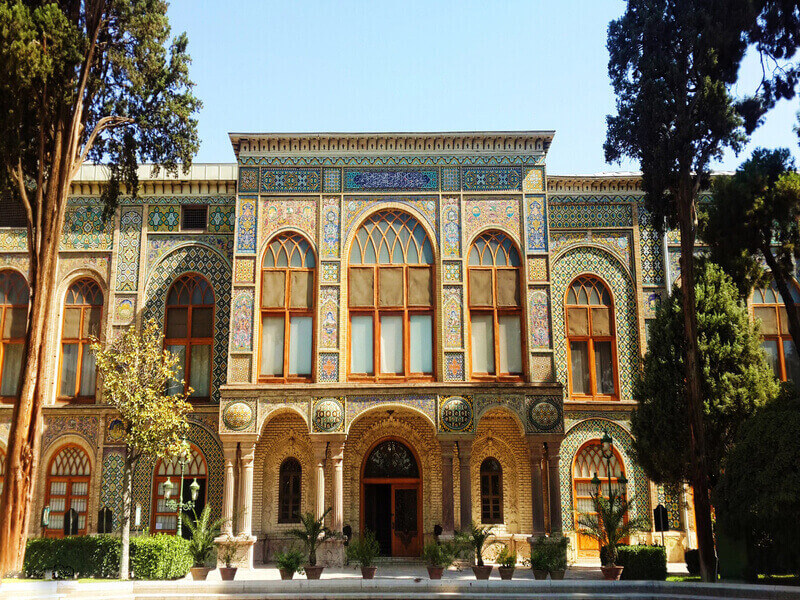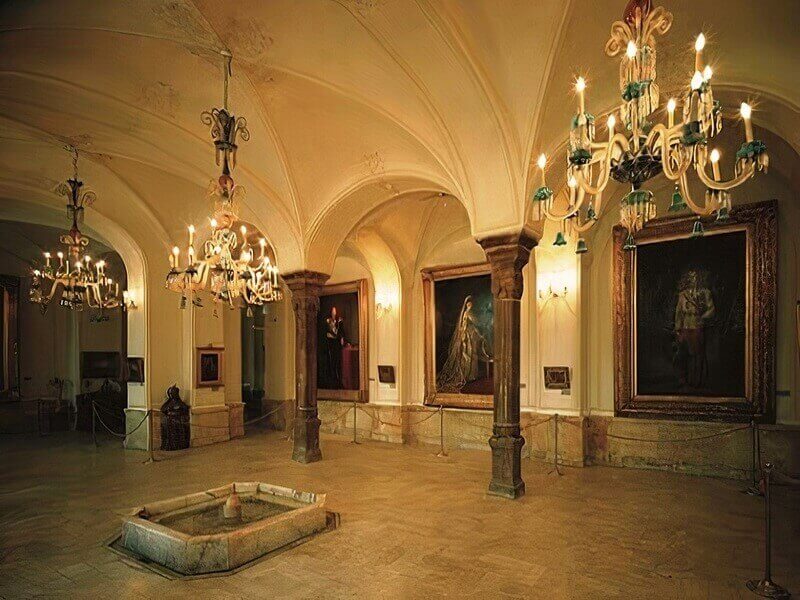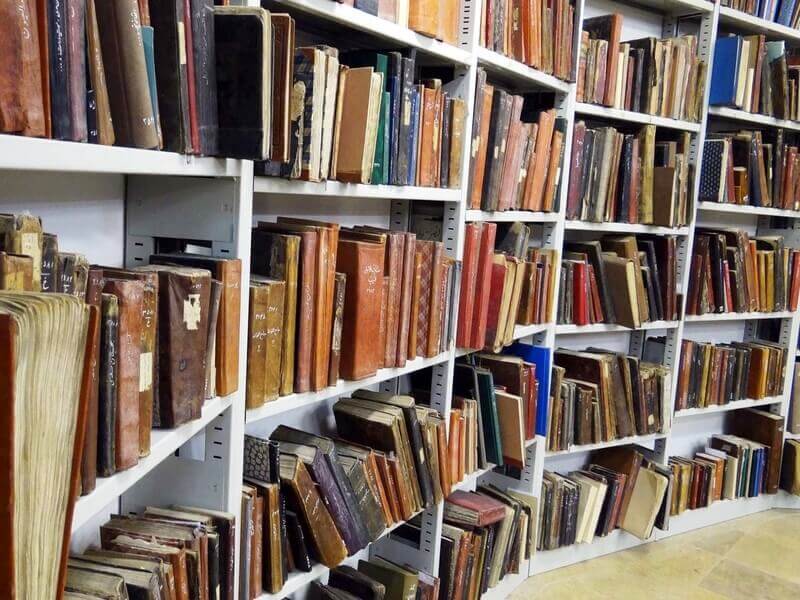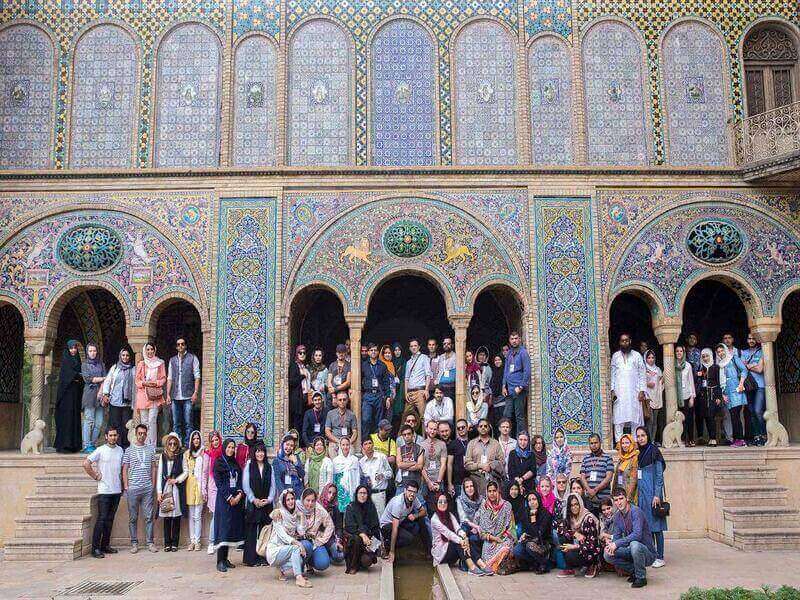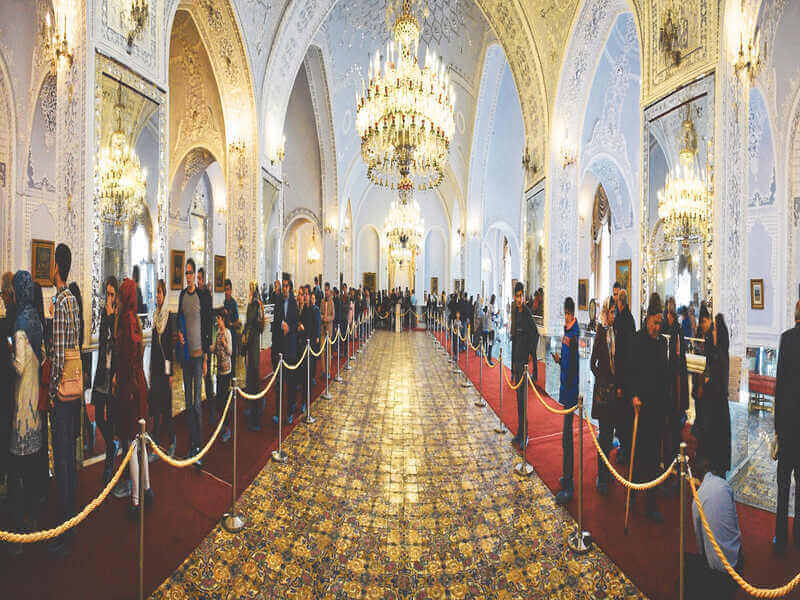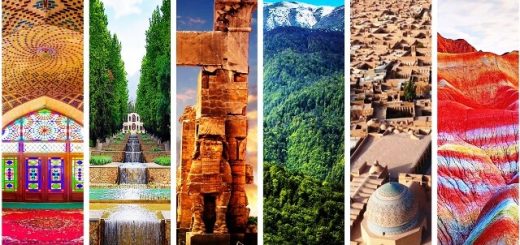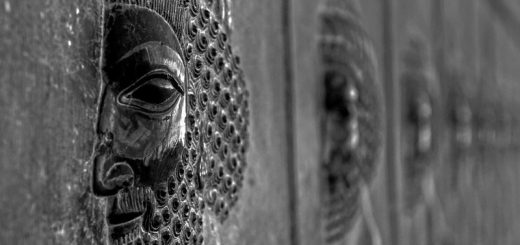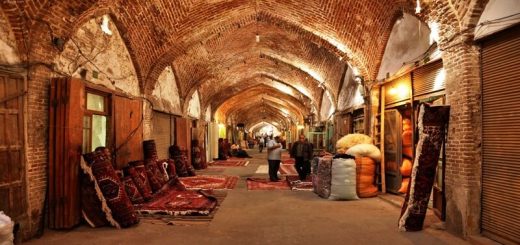Golestan Palace in Tehran
by Admin · February 19, 2022
Golestan Complex, A UNESCO Site in Tehran
Welcome to the only UNESCO World Heritage Site of Tehran, the capital of Iran.
Golestan Palace in Tehran is one of the World Heritage Sites of Iran on the UNESCO World Heritage List. Thanks to its unique architecture and delicate decorations, it is ideal for photographing and capturing lovely images. This valuable monument was inscribed on the UNESCO World Heritage List in 2003.
In addition, since critical historical events happened in this place, it is considered a living document a part of Iran’s history.
This complex, which is one of the most popular tourist attractions in Tehran, is located in the old part of the city and can be easily accessed by public transport.
Here you can find ultimate information about Golestan Palace, different sections with photos, and information about visiting this incredible sight. Hence, if you have any questions about visiting Golestan Palace, contact us.
Golestan Palace Complex at A Glance
Golestan Palace includes a collection of historical buildings in the old context of Tehran, which was built at different times. In terms of architecture, art, and history, this building is one of the most important historic buildings in the country, with more than 440 years of antiquity. The area of Golestan Palace Complex reaches 4.5 hectares and has been the residence of Qajar kings.
The Golestan Palace Complex consists of different sections such as Marble Throne (Takht-e Marmar), Salam Hall (Talar-e Salam), Mirror Hall (Talar-e Ayeneh), Dining Hall, Khalvat-e Karimkhani, Windcatcher Mansion (Emarat-e Badgir), Shams ol-Emareh Palace, Diamond Hall (Talar-e Almas), Talar-e Berelian Abyaz Palace, Museum of Gifts, Containers Hall (Talar-e Zorouf), Ivory Hall (Talar-e Aaj), Pond House (Howz Khaneh), Golestan Palace Library, etc.
Notably, the Marble Throne and Khalvat-e Karimkhani, which belong to the Zandiyeh era, are the oldest buildings in the Golestan complex.
“Why is Golestan Palace famous?
The Golestan Palace is an outstanding example of Qajar art and architecture and a source of inspiration for Iranian artists and architects to this day. It exemplifies the architectural and artistic achievements of the Qajar era and the co-existence of Persian and European architectural elements.”
Where is Golestan Palace?
Golestan Palace is located in Arg Square, 15 Khordad St, Tehran. The best option to reach this complex is to use the subway. For this purpose, you have to get off the metro line one at the 15th of Khordad station, and after a 5-minute walk, you will reach the 15th of Khordad Square (formerly Arg Square). Finally, on the northern side of this square through Davar Street, you can see the entrance of the Golestan Palace.
Fortunately, there are several tourist attractions, hotels, and restaurants near Golestan Palace that you can find in the below table.
Golestan Palace Opening Hours
- Spring and summer: from 9:30 to 18:30 (ticket sales: until 17:30)
- Autumn and winter: from 9:00 to 17:00 (ticket sales: until 16:00)
Important Note: You need at least two hours to visit the collection.
Also, the Golestan Palace complex is closed on eight official holidays, i.e.:
1- Tasua
2- Ashura
3- Martyrdom of Imam Ali
4- Demise of Imam Khomeini (3rd or 4th June)
5- Martyrdom of Imam Sadegh
6- Demise of Prophet Mohammad
History of Golestan Palace
According to documents, the history of Golestan Palace dates back to the Shah Abbas Safavid era. However, this palace’s most important historical period is related to the eras of Agha Mohammad Khan and Naser al-Din Shah Qajar. Naser al-Din Shah Qajar was crowned in this palace and was the first king of Iran who traveled to Europe. Consequently, some parts of the Golestan Palace were changed under European architecture’s influence. During the Qajar period, this complex was used for ruling and royal residence and training artists and architects; hence, it was an important center for art production in the 19th century in Iran.
Golestan Palace was also renovated in the first and second Pahlavi eras.
The Architecture of Golestan Palace
Golestan Palace in Tehran includes several royal palaces and halls in a gorgeous garden. The architecture of this complex is a combination of traditional Iranian and neoclassical European architectural styles.
You can see magnificent art in Golestan Palace tiles, with various designs such as mythology, hunting, feasts, romance, battles, landscapes, historical monuments, kings’ government, religion, etc. Expanding contact with the Western world is also evident in these tiles.
It is not only the tiles of Golestan Palace that amaze you, but when you enter this building, the spectacular mirror works dazzle your eyes. Especially in the Mirror Hall, which has been decorated for more than seven years.
In the following, we have introduced different parts of Golestan Palace.
Different Parts of the Golestan Palace Complex
The Golestan complex’s garden with tall trees, colorful tiles, a pool, and fountains is a great place to relax. There is also a small market at the entrance that takes you to the colorful world of Persian handicrafts to buy lovely Iran souvenirs.
1- Golestan Palace Garden
The Golestan complex’s garden with tall trees, colorful tiles, a pool, and fountains is a great place to relax. There is also a small market at the entrance that takes you to the colorful world of Persian handicrafts to buy lovely Iran souvenirs.
2- Shams ol-Emareh, the ancient Symbol of Tehran
Shams ol-Emareh, which was considered the symbol of the capital before the construction of the National Garden Gate, is still known as one of the symbols of old Tehran; A high building with impressive decorations and design, which was the tallest building in the city for many years.
The idea of its construction originates from the European travels of Nasser al-Din Shah. During his trip to Europe, he was fascinated by the images of buildings and skyscrapers in Western countries. So, he ordered the construction of a building that could overlook the view of Tehran and the surrounding landscape. Therefore, the 35-meter Shams ol-Emareh palace was built on five floors.
3- Marble Throne, The Oldest Part of the Golestan Complex
The oldest building in the complex called the Marble Throne (Takht-e Marmar, Dar ol-Emareh Porch or Divankhaneh), was built during the Zandieh period. The decoration of this palace includes eye-catching plastering, masonry, inlay work, mirror work, and lattice.
Moreover, there is a marble throne, like the throne of Solomon, on the fairies’ shoulders in this mansion. Sixty-five pieces of large and small marbles are used in this throne, and there are beautiful carvings on it.
4- Private Palace (Kakh-e Ekhtesasi)
The Private Palace of the Golestan Complex includes Salam Hall, Ivory Hall, Mirror Hall, Dishes Hall, and Berelyan Hall. Here, we will give a brief explanation about them.
1- Salam Hall (Talar-e Salam)
Salam Hall is located on the northwest side of Golestan Palace, built as a museum from the beginning. Nasser al-Din Shah, who was impressed by the museums in Western countries, decided to build similar museums in this royal residence. In this regard, he ordered to destroy the old buildings in this part of the garden and constructed the first museum of Iran.
2- Mirror Hall (Talar-e Ayeneh)
Golestan Palace Mirror Hall is one of the famous halls of this complex, which is located next to Salam Hall. Much of the hall’s fame is due to Kamal al-Molk’s incredible painting of the Mirror Hall and Nasser al-Din Shah, which took five years to complete. Interestingly, the size of the hall looks much bigger than the actual hall, which shows the artist’s art in giving greatness to the pavilion.
3- Ivory Hall (Talar-e Aaj)
Ivory Hall is another part of the Private Palace. There is a watercolor painting of Mahmoud Khan-e Malek o Shoara, which shows the exterior of the Ivory Hall during the Qajar era.
There are currently two large elephant ivories in this hall, showing the reason for naming the hall.
4- Museum of Dishes (Talar-e Zoroof)
In the Museum of Dishes, you can find some gifts of the kings of European countries to the Qajar kings. The ceramics related to Napoleonic Bonaparte’s Wars, the jewelry pieces donated by Queen Victoria, Alexander III, Nicholas I of Russia, etc., are among these gifts.
5- Brelian Hall
The Brelian Hall is another part of the Private Palace, famous for its magnificent mirrors and chandeliers.
5- Gallery Museum (Negarkhaneh Museum)
This museum is a part of the Salam Hall pool house, including curtains and paintings of the Iranian Qajar period.
In addition, the northern part of this section was built during the second Pahlavi period and served as the Royal Guard’s headquarters. Today, the section houses paintings by late Qajar artists.
6- Special Museum (Makhsoos Museum)
This museum is a part of the Salam Hall pool house. The objects in this museum are among the most exquisite things left by the Qajar kings. Some of these objects were part of a collection that was once in the Nasser al-Din Shah’s museum, which either belonged to earlier periods or were offered by kings and artists of that time.
7- Khalvat-e Karim Khani
Khalvat-e Karimkhani is located in the northwest corner of Golestan Palace and consists of a building in the form of a three-aisled and columned porch with a beautiful pool in the middle. The importance of this building is due to the historical event of the time of Agha Mohammad Khan Qajar, the enemy of Karim Khan Zand. He exhumed the remains of Karim Khan Zand’s body in Shiraz and transferred it to this place; by crossing the burial place of Karim Khan, he could humiliate him.
Then, during the reign of Nasser al-Din Shah, it became a rest area called the Karimkhani courtyard. Finally, in the first Pahlavi period, Karim Khan’s bones were transferred to Qom for respect.
Besides, the tombstone of Naser al-Din Shah and the throne of Fath Ali Shah are in Khalvat-e Karimkhani.
8- Windcatcher Mansion (Emarat-e Badgir)
The Windcatcher Mansion, located on the south side of the Golestan Palace Complex, was built during the Fath Ali Shah-e Qajar period and renovated during the reign of Nasser al-Din Shah.
Extraordinary decorations have also been used in the windbreak mansion, including painting, mirror work, plastering, inlay work, and goldsmithing. The most attractive part of the mansion is the royal residence hall with 9 Orsi, painted marble plinths, mirrors, two painted spiral columns, seven-color mosaic flooring, wall and ceiling paintings that dazzle every viewer.
9- Photo Museum (Aks Khaneh)
In the basement of Emarat-e Badgir, there is a large pool house with a marble pool, in the four corners of which there are four tall windcatchers made of blue, yellow, and black mosaic tiles. The combination of the pond and the windcatchers creates a cooling system for the hall and rooms.
The Photo Museum displays a collection of photographs and photographic equipment from the Qajar period.
The collection of photos in the Golestan Palace House is considered the second collection after the Royal Collection of England. Nasser al-Din Shah himself was very interested in the art of photography. The photographs the king took himself, and the ones on which his handwriting is, have been exhibited in this museum.
10- Diamond Hall
Located next to the Windcatcher Mansion, Diamond Hall is one of the old parts of Golestan and is known for its brilliant interior mirrors. This building’s oldest part is the mirrored muqarnas on the south porch. There are several vestibules and attics in the Diamond Hall. Additionally, there is a large pool house under the hall.
11- Golestan White Palace (Kakh-e Abyaz)
During the Qajar Era, Ottoman Sultan Abdul Hamid sent Nasser al-Din Shah some expensive furniture, including steel sofas, mirrors, velvet curtains, bronze sculptures, and hand-woven Turkish carpets. But, at the time, the king’s palaces were at the height of beauty, and these items were unnecessary. Nasser al-Din Shah ordered to build a new palace for these items in the southwest corner of the Golestan Complex.
Using European architecture as an example, he ordered the palace painted white and used marble staircases. For this reason, the new building in Golestan Palace Complex was named Kakh-e Abyaz (White Palace).
This building houses an anthropological museum featuring both Qajar men’s and women’s clothing and clothing from other parts of Iran. This museum is one of the richest and oldest anthropological museums in Iran.
12- Pond House (Howzkhaneh Museum)
In the basement of the Ivory Hall lies the Golestan Palace Pond House, which was built by order of Naser al-Din Shah upon returning from western countries with a combination of European and Iranian architecture. Previously, there was a fountain in this room, which originated from the Mehrgard aqueduct. Consequently, its pleasant weather made it a popular resting spot for courtiers.
This pond house was destroyed during the reign of Reza Shah Pahlavi and became one of the museum halls. And during the reign of Mohammad Reza Shah Pahlavi, ceremonies, celebrations, and religious festivals were held in this hall.
In recent years, a small pond in the style of the old one has been built in this hall. Now, Howz Khaneh is a permanent exhibition of paintings by European painters such as Simon van Goldbebs, Aivazovsky, and famous Iranian painters.
13- Golestan Palace Library
Golestan Palace Library consists of two parts: manuscript library and printed book library:
The library’s history and treasury of manuscripts have been running since the Fath Ali Shah Qajar period under the name of Imperial Library. And the printing library started operating during the second Pahlavi era.
This library has more than 7,000 historical, art, and lithographic books, of which about 2,500 are historical books. Thus, the Golestan Palace Library can be considered a source of Qajar books.
In the printed book library, a 52-year-old Divan-e Shams is the oldest book in the collection. On the other hand, the oldest book from the Qajar period is called “Toofan al-Baka.” There are only 56 copies of this book globally, and it is a visual narrative of Imams’ life and stories. In the Golestan Palace Library’s manuscript section, books such as Moraqqa-e Golshan, Baysonghori Shahnameh, One Thousand and One Nights, and exquisite old Qurans are the oldest books.
Notably, Golestan Palace Library is not open to public libraries, and it can be used only by students, professors, writers, and researchers.
Facilities of Golestan Palace
While visiting Golestan Palace in Tehran, you can use the teahouse and the photography section.
Golestan Palace Tea House
While touring Golestan Palace, you can relax for a while in the teahouse and enjoy its fragrant drinks and delicious food.
Photography in the Atmosphere of the Qajar Period
During your visit to Golestan Palace, do not forget to visit the photo booth and take lovely photos in Qajar clothes.
Golestan Palace Ticket Prices
The Golestan Palace entrance fee for international visitors is 1,000,000 Rials. However, you must purchase separate tickets to visit the halls and museums. In the following table, you can see the entrance ticket price to different sections of the Golestan Complex.
Attention:
– The ticket for the Gallery Museum, Special Museum, and Private Palace entitled “Main Part of the Golestan Palace” for international visitors is 1,000,000 Rials.
– Visiting Khalvat-e Karim Khani, Talar-e Zoroof, and the Brelian Hall is free.
– The upper floors of the Shams Ol- Emareh Mansion are not open to the public
Finally, if you have any other information about Golestan Palace in Tehran or have any questions, please leave your comments.

Most Frequent Questions and Answers about
Golestan Palace in Tehran
Like this article?
Subscribe To Our Newsletter
Get updated articles about Iran trip

